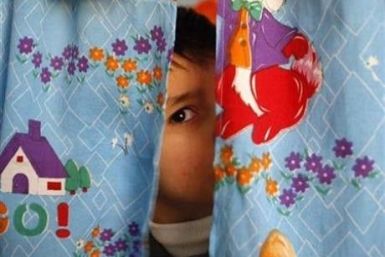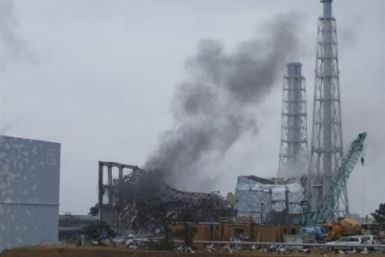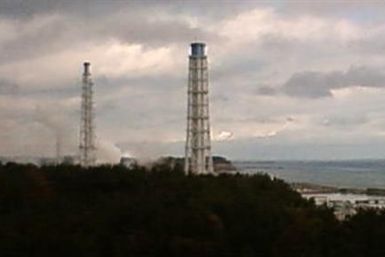Are you one of those individuals who have hard time sleeping? If you are, you need to know something about the relationship between your glucose levels and sleeping pattern.
According to a new research, many babies from the United States are fed with teas or herbal supplements.
Current European research poses a challenge to the well known fact that an increase in salt intake results to cardiovascular diseases.
According to a study which focused on twins from Sweden, dementia and carrying extra pounds are linked together. This study focused on twins for a span of 30 years. It has been claimed that having those extra pounds while on the middle age years has become riskier to develop dementia.
According to a new study, beer guts and muffin tops are not just embarrassing but they can also be deadly. This study showcases that a big belly increases the risk of death for people with heart disease despite having a healthy body mass index (BMI).
Studies have already shown that indoor tanning heightens the risk of fatal skin cancer melanoma. It actually increases to an alarming 75 percent higher risk. Despite this, a new survey has revealed that young women still continue using tanning beds at a rate that is very alarming.
Studies show that one out of eight soldiers who fought in Iraq shows signs and symptoms of post traumatic stress disorder. According to the U.S. Naval Health Research Center, a soldier who has a pre-existing mental disorder has a higher possibility of getting a post-traumatic stress disorder (PTSD) after being sent to a battlefield. Soldiers diagnosed with anxiety disorder, depression, personality disorder or any other psychiatric disease has the potential to develop the PTSD.
Last Monday, the government said that a possibility of salmonella contamination has been the cause of recall of grape tomatoes. The supplier for Taylor Farms Pacific, Inc. recalled these grape tomato products.
According to the federal Food and Drug Administration (FDA), the consumption of raw milk holds potential health risks because of the dangerous microorganisms it contains. Despite the warning from the FDA, raw milk drinkers and producers defy it. They say it is a healthier approach in drinking milk
Even though there have been improvements with regards to air quality and the decrease of cigarette smoking in the United States, asthma rates are on the rise across the country. The United States Centers for Disease Control and Prevention made this statement.
The journey towards determining ways to detect autism earlier on shows development. Outcome of a long-term magnetic resonance imaging (MRI) research in Chapel Hill, North Carolina has validated that early overgrowth of the brain of autistic children before reaching the age of two.
Researchers have found a strong association between computer and Internet use in adolescents and engagement in multiple-risk behaviours (MRB), including illicit drug use, drunkenness and unprotected sex.
A report from German scientists has refuelled apprehensions over the carcinogenic implications of energy saving devices, bulbs in particular.
There are many people who think the Fukushima nuclear crisis has signaled the demise of the nuclear power industry, or at least that it will soon run into a ditch. But certain facts speak otherwise. Rising scepticism about the industry's future, especially in Europe, notwithstanding, the nuclear power sector is more likely to thrive than not.
For the first time in 27 years, clinical diagnostic criteria for Alzheimer's disease dementia have been revised, and research guidelines for earlier stages of the disease have been characterized to reflect a deeper understanding of the disorder. The National Institute on Aging/Alzheimer's Association Diagnostic Guidelines for Alzheimer's Disease outline some new approaches
Tokyo Electric Power Co. (TEPCO), which operates Japan's damaged nuclear plant at Fukushima, said on Sunday that radiation level at the plant will be brought down to a downward trend within three months. The following is the latest update from TEPCO about the status of the Fukushima-Daiichi nuclear plant:
Some of the pharmaceuticals intended to treat minor illnesses of astronauts in space may have shorter shelf-life than they do on Earth, finds a new study.
Catherine Zeta-Jones follows several celebrities including Ben Stiller and Sting into treatment for Bipolar Disorder. The actress was reportedly hit by the stress of husband Michael Douglas' throat cancer battle.
A U.S. Environmental Protection Agency draft assessment of the potential health effects associated with formaldehyde exposure needs substantial revision, says a new report from the National Research Council, which recommends improvements for EPA's final assessment.
Many of the world's fast-growing urban areas, especially in developing countries, will likely suffer disproportionately from the impacts of changing climate, a new study said.
In what would have been a scary repetition of the tragedy that unfolded after the quake-tsunami last month, two out of three power lines to Japan's Onagawa nuclear plant were knocked out in the fresh aftershock that occurred in Japan's north-east on Thursday night.
The International Atomic Energy Agency said on Wednesday the leak of highly contaminated water from the cable storage pit located next to the Unit 2 inlet point at Fukushima Daiichi nuclear power plant has stopped.
A new study published by the American Heart Association has found that about one in 44,000 college athletes suffer sudden cardiac death each year, which is higher than what earlier estimates supposed.
If experiments going on at the University of Minnesota's heart lab succeed, there could be a way to 'grow your own heart' in due course of time, a development that will find a way around heart transplants that force lifetime use of anti-immunity drugs.
Japanese authorities informed the International Atomic Energy Agency (IAEA) on Sunday that external power supply was being used to power the pumps that are injecting fresh water into reactors 1, 2 and 3, thus replacing temporary electrical pumps. It was also informed that some lighting has been reactivated in the turbine buildings of Units 1, 2, 3 and 4.
The Tokyo Electric Power Co.(TEPCO) said on Sunday the bodies of two workers at the damaged Fukushia nuclear plant have been found. The bodies of the two young workers, Kazuhiko Kokubo and Yoshiki Terashima, were found a week ago, but they had to be decontaminated before being handed over to the relatives.
China is facing an obesity crisis of magnanimous proportions, an issue best underscored by Lu Zhihao, a 4-year-old from Foshan in Guangdong province who weighs 132 lbs and is 3 feet 7 inches tall.
University of North Florida's student newspaper the Spinnaker has run into trouble after printing a picture of simulated oral sex on its front cover.
Indicating the distressing trend of size zero has gone global, a new research has found how stigmatization of fat and obesity has spread from western countries across more accepting cultures.
The recent nuclear disaster in Japan has put a spotlight on measuring radiation dosage and the health effects, and how to diagnose thousands of people at a time.




























